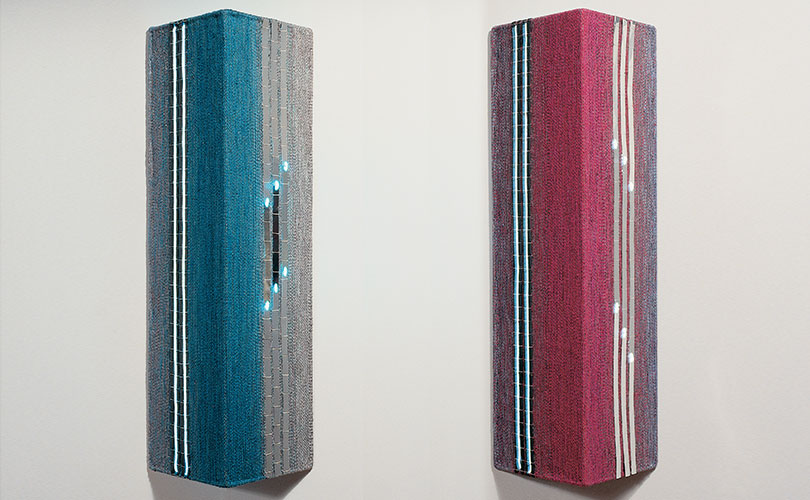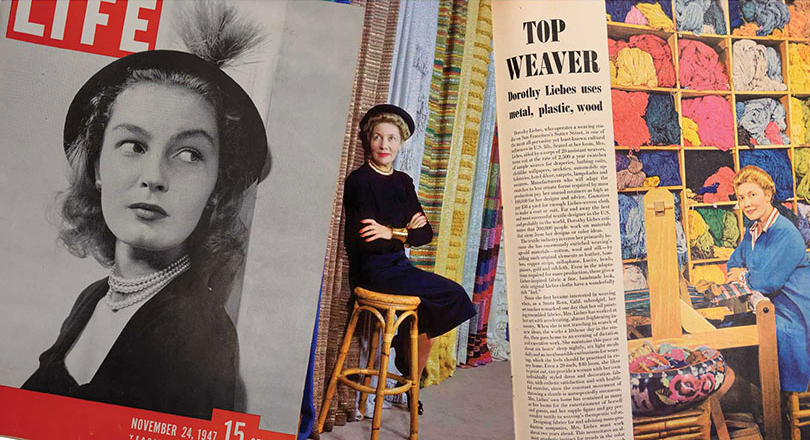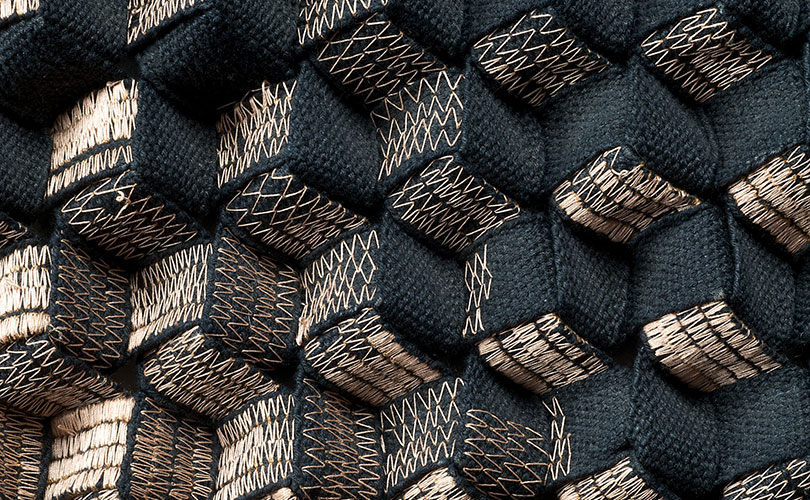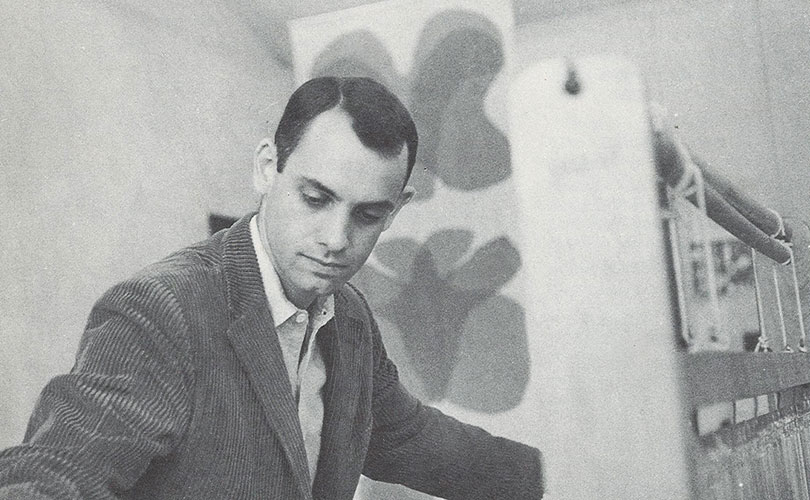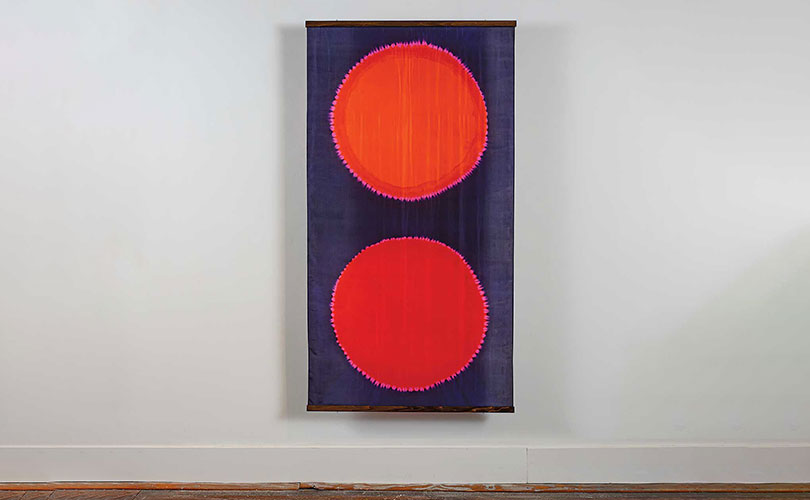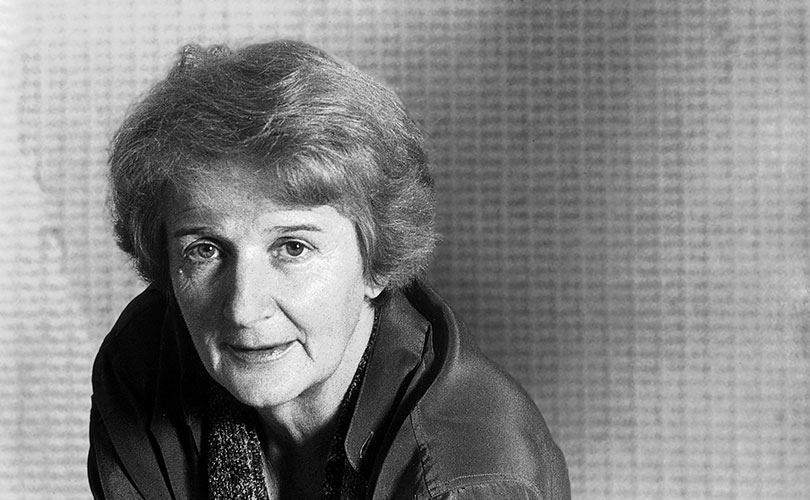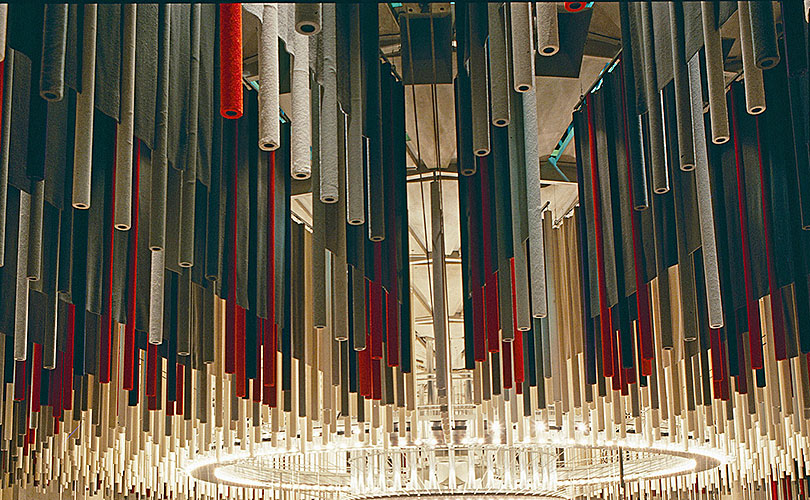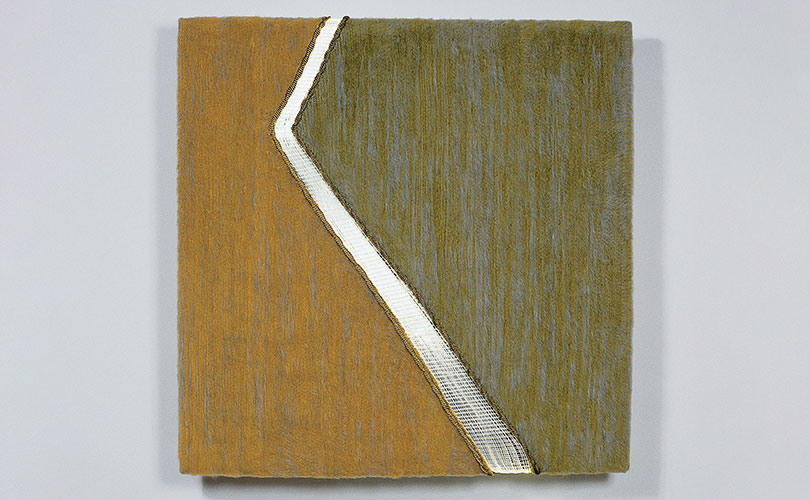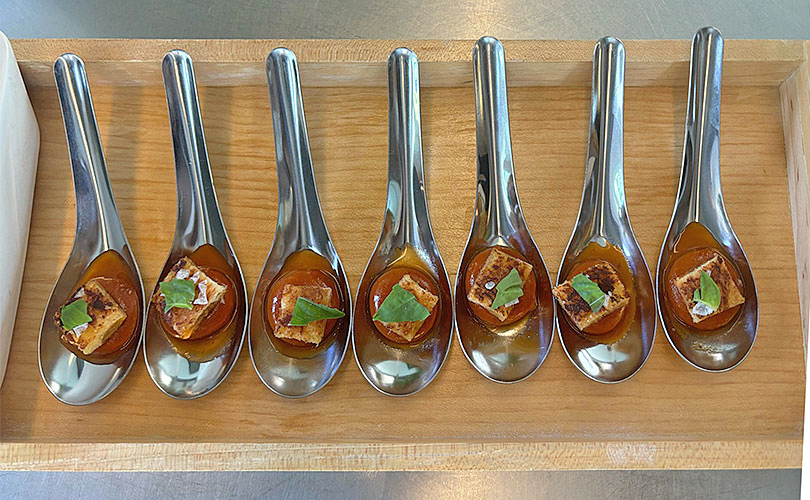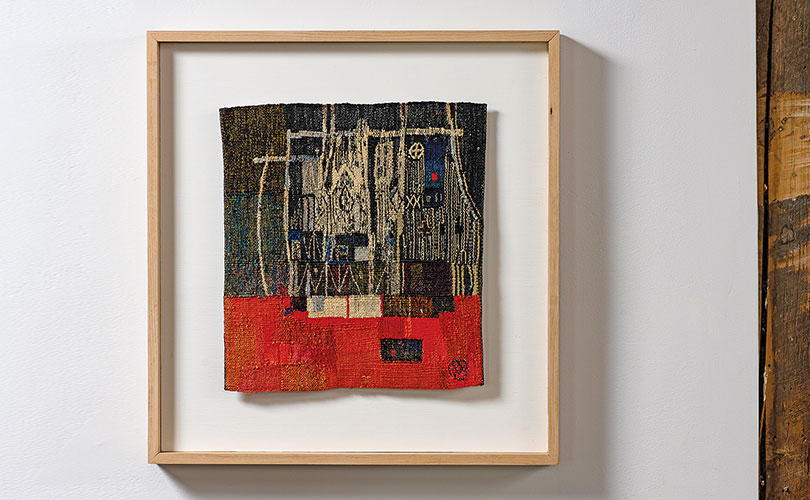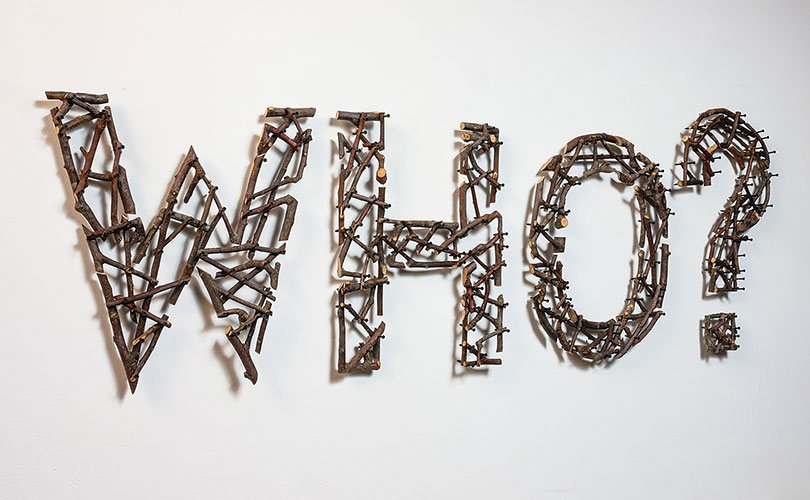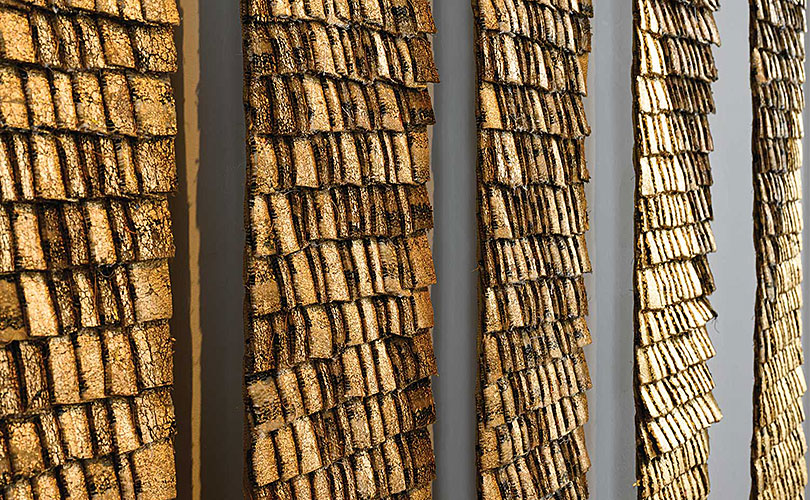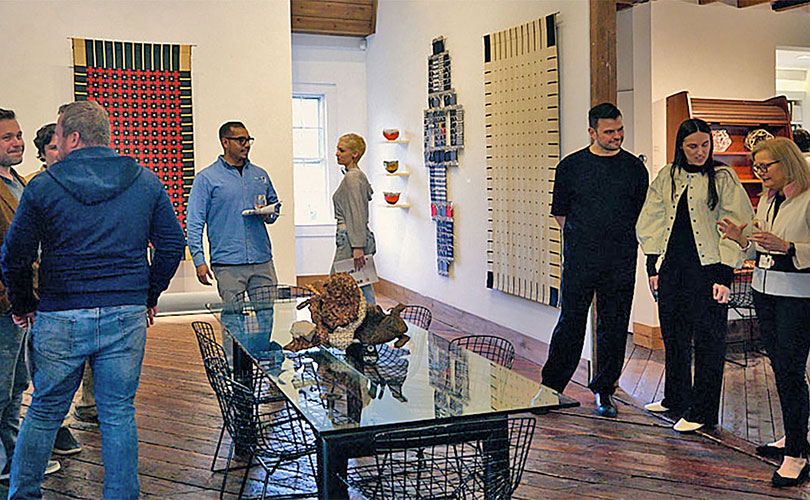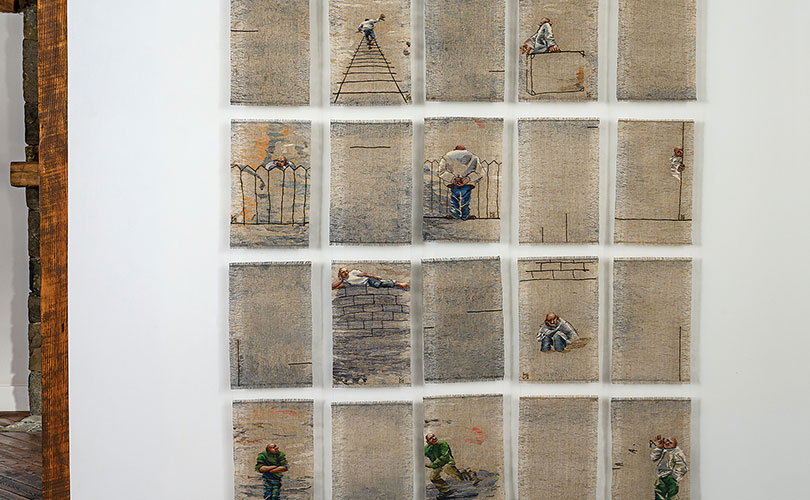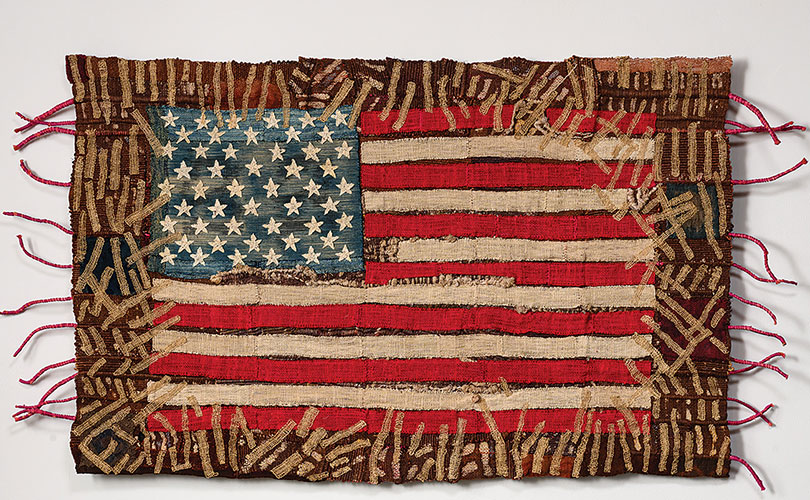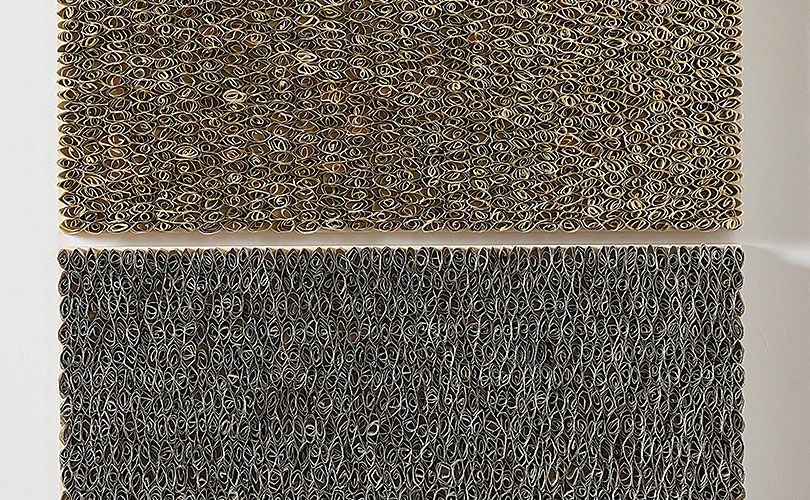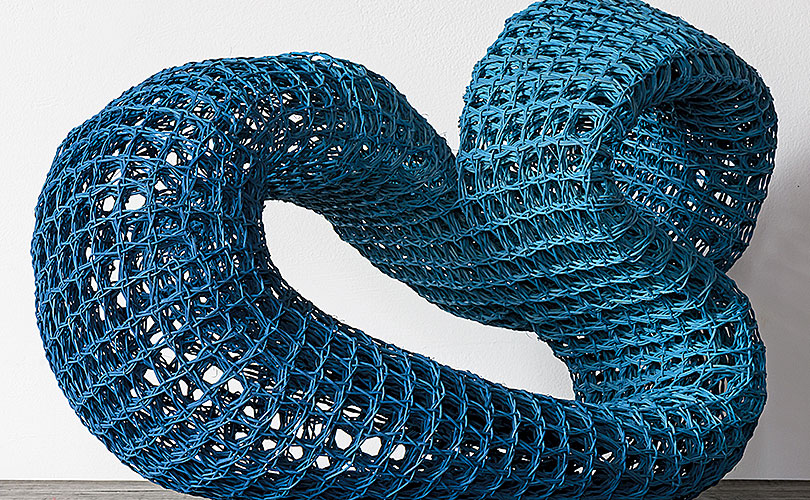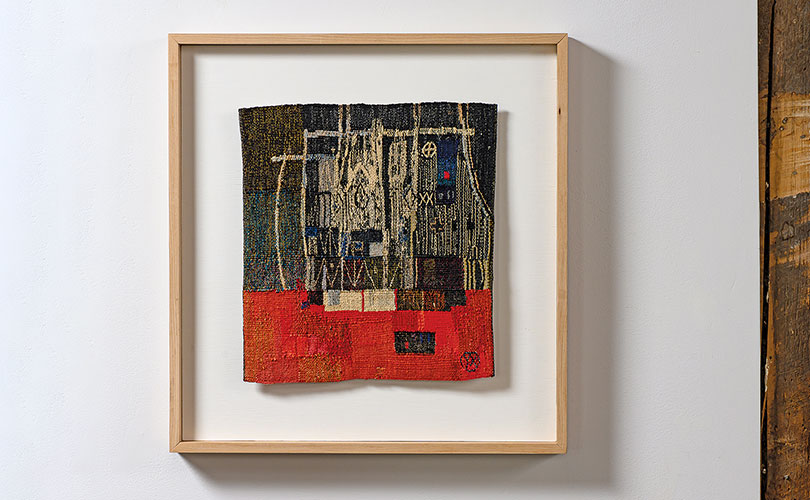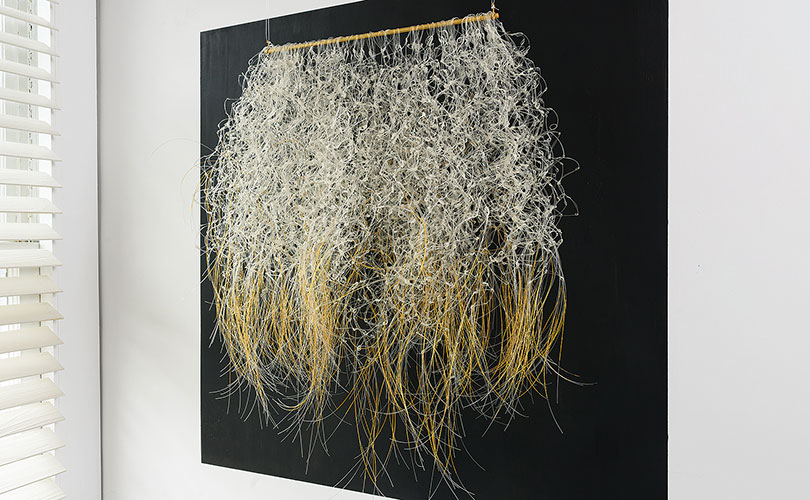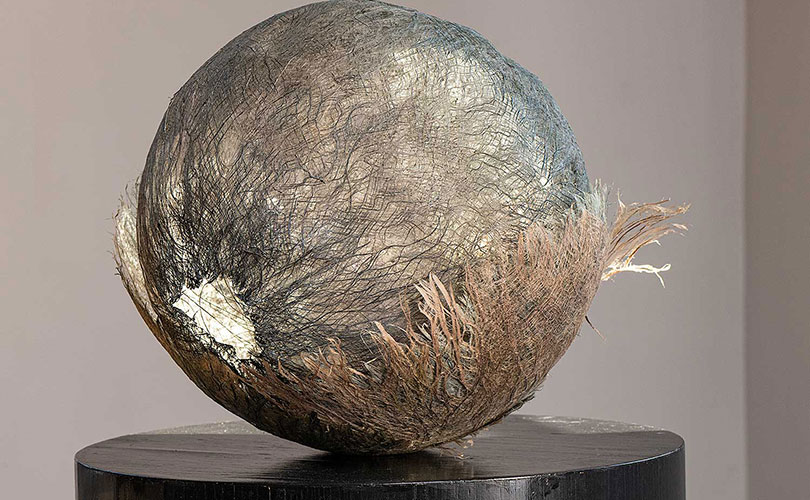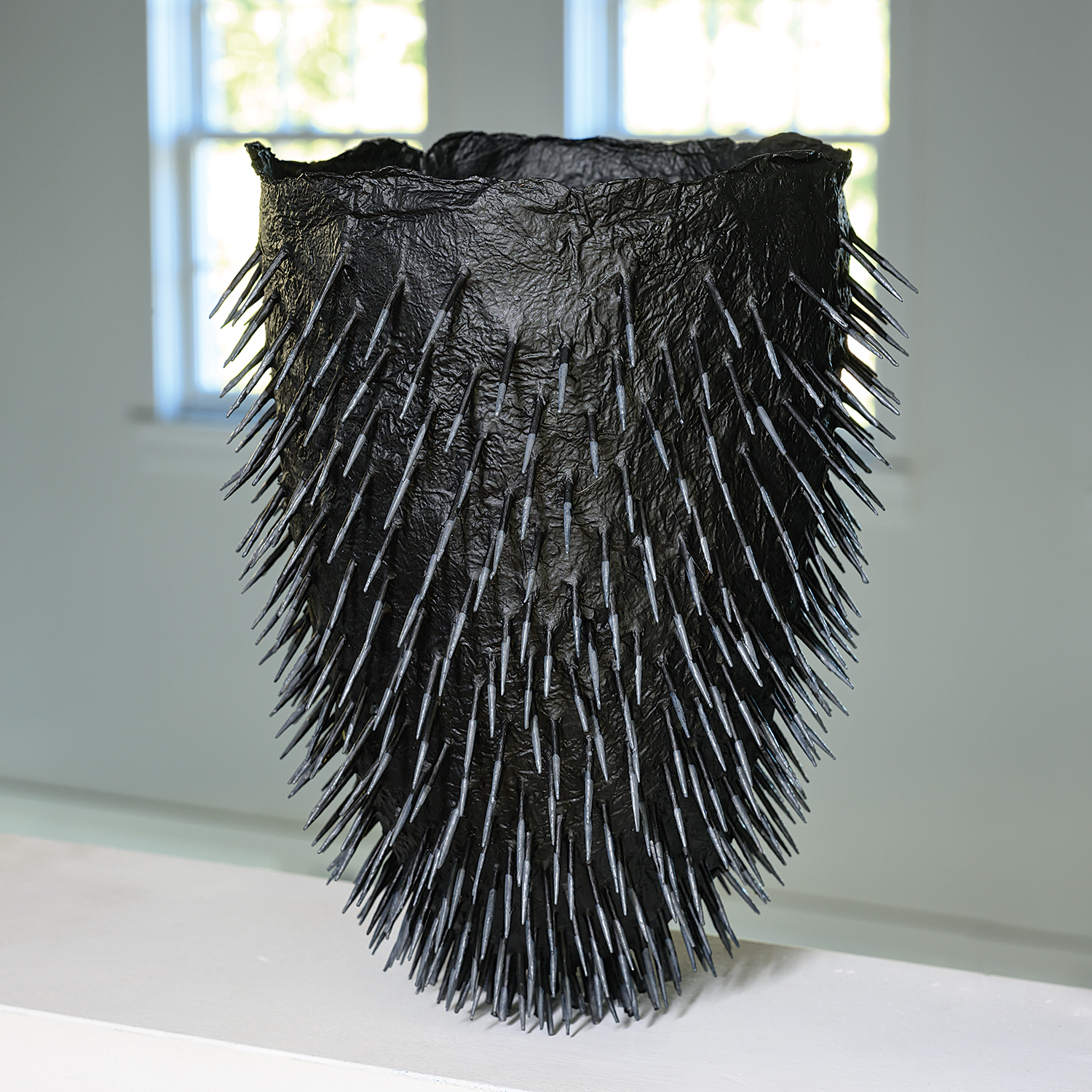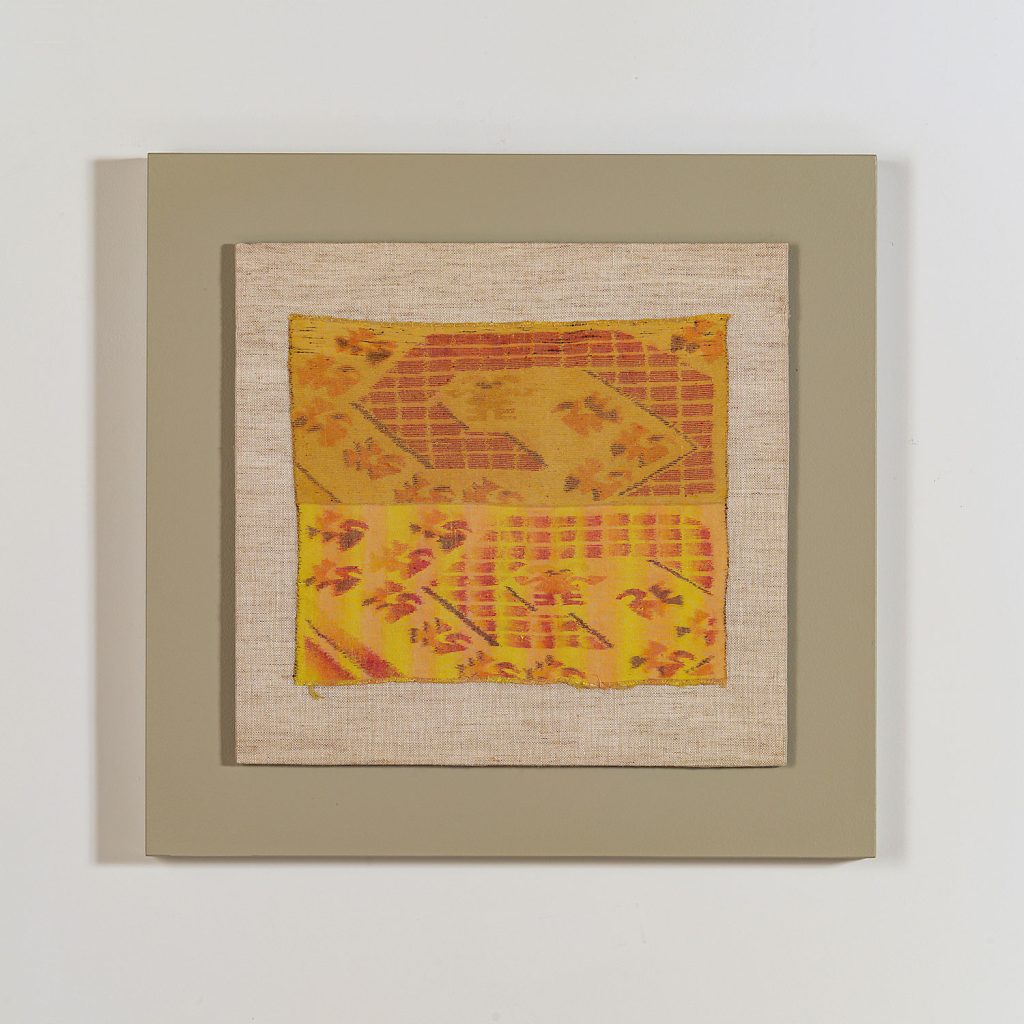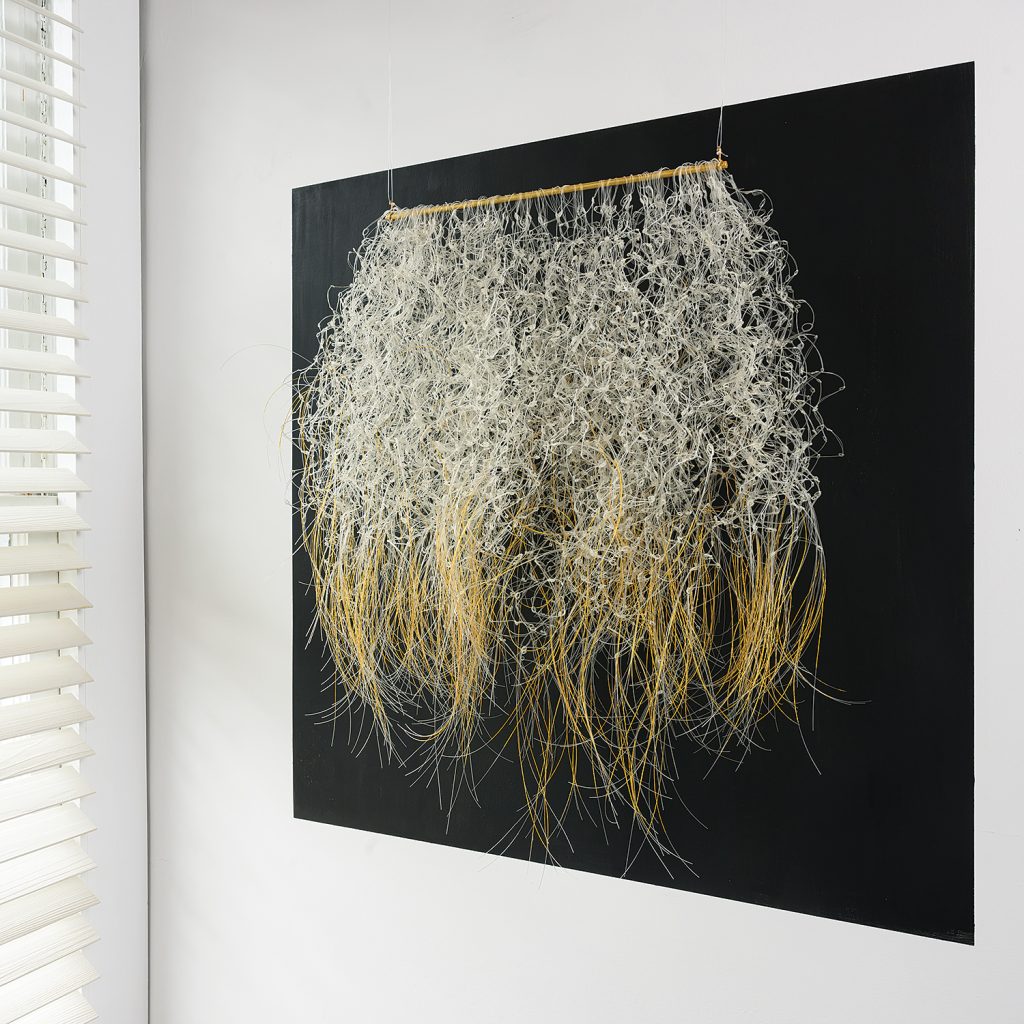May has brought with it a fresh wave of inspiration as we embrace the new opportunities that Spring offers. Alongside the launch of our exhibition, Discourse: art across generations and continents, we’ve been thrilled to introduce our audience to a diverse array of New This Week features, showcasing the work of talented artists we’ve had the privilege of collaborating with over the years.
Now, as the month comes to a close, we’re excited to recap each artist we’ve highlighted.

To kick off the month, we featured the remarkable artwork of Polly Barton. In the art world, Barton is a nationally recognized artist who has been working in fiber for 40 years. Trained in Japan, she is known for working with traditional methods of binding and dyeing bundles of fiber to weave contemporary imagery.
In her practice, Barton incorporates a wide range of materials in her work including pigment, soy milk, pastel, metallic threads, stitching, papyrus, and metal leaf. She was also one of the many talented artists featured in Discourse, which is now live on Artsy.

plaited color paper, acrylic, ink drawing, paper, 43″ x 49″ x 2.5″, 1982
Next, we highlighted the work of talented artist Neda Al-Hilali. This Czechoslovakian artist, who works in the US, is known for for vibrant, detailed works of paper created in the 80s and previously, dramatic “Rope Art,” (featured in Life magazine in the 70s). Al-Hilali is one of the artists included in Subversive, Skilled, Sublime: Fiber Art by Women, that opens at the Smithsonian American Art Museum this week.
Her work has been long recognized, and we are honored to be able to exhibit this strong work by Al-Hilali!

We then turned our spotlight to artist Michael Radyk. Radyk is an artist who explores woven textiles and the qualities inherent in their structure, production, design, craft, and history. He uses both the hand loom and Jacquard loom to produce his work. Radyk designs, weaves, cuts, sculpts, and manipulates his textiles into both two and three-dimensional sculptural forms.
In his artistry, Radyk’s work involves the reinvention of manufactured materials and familiar textiles such as corduroy. He creates work that is based in place and material research using mainly recycled and repurposed materials.

To close out the month, we highlighted the work of artist Ésme Hofman. Hofman is a traditionally trained basketmaker who learned the foundations of my craft at the German basketry school. When creating, Hofman looks beyond the borders of this traditional handcraft. This gives her freedom to explore creative possibilities, and generates other ways of making.
Her techniques and materials now vary from the traditional to the contemporary using natural stems, leaves, bark, wire, plastics, vellum, paper and occasionally color. Although fascinated by different possibilities, her my main focus is with the very time-consuming willow skeinwork, a nearly-extinct basketry technique that results in an extremely fine surface texture. Almost like textile, it enables her to create fine objects.
We hope you’ve enjoyed discovering these remarkable works as much as we have. Stay tuned for more exciting updates and features in the months ahead!

